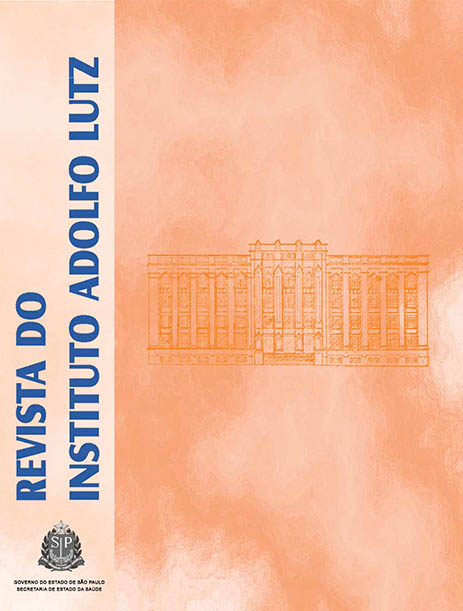Abstract
Chlamydia trachomatis is an obligate intracellular parasite, which is believed to be one of the agents that cause problems in human reproduction. The aim of this bibliographical review was to search the main factors correlated with infertility or failure in the in vitro reproduction technique due to acute or chronic infections with Ct. This retrospective review was performed on scientific articles published during the last two decades (from 1984 to 2011). Chlamydia infections in women are mostly asymptomatic, and a persistent infection may increase the risk of injuring the fallopian tubes, causing infertility, premature birth, newborn conjunctivitis, pelvic inflammatory disease, and postpartum endometritis. C.trachomatist express HSP60 family proteins (Chsp60), and human recognize them as antigens. The HSP60 are also proteins expressed by mammal zygote after fertilization; consequently, women who had previously exposed to Chsp60 antigen, a secondary immune response might be produced in the early stages of pregnancy. This investigation showed a lack of papers which evidence the potencial role of C.trachomatis infection in vitro fertilization failure, and also of the controversies on the best diagnostic metodologies and treatment protocols.
References
1. Guzatto P, Scarton J, Anzolch KJ, Oliveira OLM. Prevalência de Chlamydia trachomatis em pacientes com leucocitospermia. RBAC. 2010; 42(3):205-7.
2. World Health Organization (WHO). Department of Reproductive Health and Research. Sexually transmitted and other reproductive tract infections: a guide to essential practice. 2005; 92(4):196.
3. Paavonen J, Eggert-Kruse W. Chlamydia trachomatis: impact on human reproduction. Hum Reprod Update. 1999; 5(5):433-47.
4. Carter TC, Olney RS, Mitchell AA, Romitti PA, Bell EM, Druschel CM, et al. Maternal self-reported genital tract infections during pregnancy and the risk of selected birth defects. Birth Defects Res A Clin Mol Teratol. 2011; 91(2):108-16.
5. Den Hartog JE, Morré SA, Land JA. Chlamydia trachomatis-associated tubal factor subfertility: Immunogenetic aspects and serological screening. Hum Reprod Update. 2006; 12(6):719-30.
6. Mpiga P, Ravaoarinoro M. Chlamydia trachomatis persistence: an update. Microbiol Res. 2006; 161(1):9-19.
7. Eggert-Kruse W, Rohr G, Demirakca T, Rusu R, Näher H, Petzoldt D, et al. Chlamydial serology in 1303 asymptomatic subfertile couples. Hum Reprod. 1997; 12(7):1464-75.
8. Carvalho NSd, Pegoraro MG, Takimura M, Oliveira FCJ. Prevalência da Infecção por Chlamydia trachomatis em Parturientes Jovens Atendidas em uma Maternidade Pública. DST - J Bras Doenças Sex Transm. 2010; 22(3):141-4.
9. McCormack WM. Pelvic inflammatory disease. N Engl J Med. 1994; 330(2):115-9.
10. Beatty WL, Byrne GI, Morrison RP. Repeated and persistent infection with Chlamydia and the development of chronic inflammation and disease. Trends Microbiol. 1994; 2(3):94-8.
11. Refaat B, Al-Azemi M, Geary I, Eley A, Ledger W. Role of activins and inducible nitric oxide in the pathogenesis of ectopic pregnancy in patients with or without Chlamydia trachomatis infection. Clin Vaccine Immunol. 2009; 16(10):1493-503.
12. Andersen B, Østergaard L, Puho E, Skriver MV, Schønheyder HC. Ectopic pregnancies and reproductive capacity after Chlamydia trachomatis positive and negative test results: a historical follow-up study. Sex Transm Dis. 2005; 32(6):377-81.
13. Neuer A, Spandorfer SD, Giraldo P, Dieterle S, Rosenwaks Z, Witkin SS. The role of heat shock proteins in reproduction. Hum Reprod Update. 2000; 6(2):149-59.
14. Neuer A, Mele C, Liu HC, Rosenwaks Z, Witkin SS. Monoclonal antibodies to mammalian heat shock proteins impair mouse embryo development in vitro. Hum Reprod. 1998; 13(4):987-90.
15. Kligman I, Jeremias J, Rosenwaks Z, Witkin SS. Cell-mediated immunity to human and Escherichia coli 60-kDa heat shock protein in women: association with a history of spontaneous abortion and endometriosis. Am J Reprod Immunol. 1998; 40(1):32-6.
16. Spandorfer SD, Neuer A, LaVerda D, Byrne G, Liu HC, Rosenwaks Z, et al. Previously undetected Chlamydia trachomatis infection, immunity to heat shock proteins and tubal occlusion in women undergoing in-vitro fertilization. Hum Reprod. 1999; 14(1):60-4.
17. Cunningham KA, Beagley KW. Male genital tract chlamydial infection: implications for pathology and infertility. Biol Reprod. 2008; 79(2):180-9.
18. Brunham RC, Paavonen J, Stevens CE, Kiviat N, Kuo CC, Critchlow CW, et al. Mucopurulent cervicitis--the ignored counterpart in women of urethritis in men. N Engl J Med. 1984; 311(1):1-6.
19. Witkin SS, Linhares IM. Chlamydia trachomatis in subfertile women undergoing uterine instrumentation: an alternative to direct microbial testing or prophylactic antibiotic treatment. Hum Reprod. 2002; 17(8):1938-41.
20. Punnonen R, Terho P, Nikkanen V, Meurman O. Chlamydial serology in infertile women by immunofluorescence. Fertil Steril. 1979; 31(6):656-9.
21. Gijsen AP, Land JA, Goossens VJ, Slobbe ME, Bruggeman CA. Chlamydia antibody testing in screening for tubal factor subfertility: the significance of IgG antibody decline over time. Hum Reprod. 2002; 17(3):699-703.
22. Kaufmann SH. Heat shock proteins and the immune response. Immunol Today. 1990; 11(4):129-36.
23. Wiegerinck MA, Bongers MY, Mol BW, Heineman MJ. How concordant are the estimated rates of natural conception and in-vitro fertilization/embryo transfer success? Hum Reprod. 1999; 14(3):689-93.
24. Gnoth C, Godehardt E, Frank-Herrmann P, Friol K, Tigges J, Freundl G. Definition and prevalence of subfertility and infertility. Hum Reprod. 2005; 20(5):1144-7.
25. Askienazy-Elbhar M. Immune consequences of Chlamydiainfections in pregnancy and in vitro fertilization outcome. Infect Dis Obstet Gynecol. 1996; 4(3):143-8.
26. Al-Mously N, Cross NA, Eley A, Pacey AA. Real-time polymerase chain reaction shows that density centrifugation does not always remove Chlamydia trachomatis from human semen. Fertil Steril. 2009; 92(5):1606-15.
27. Bell TA, Stamm WE, Kuo CC, Wang SP, Holmes KK, Grayston JT. Risk of perinatal transmission of Chlamydia trachomatis by mode of delivery. J Infect. 1994; 29(2):165-9.

This work is licensed under a Creative Commons Attribution 4.0 International License.
Copyright (c) 2011 Instituto Adolfo Lutz Journal
